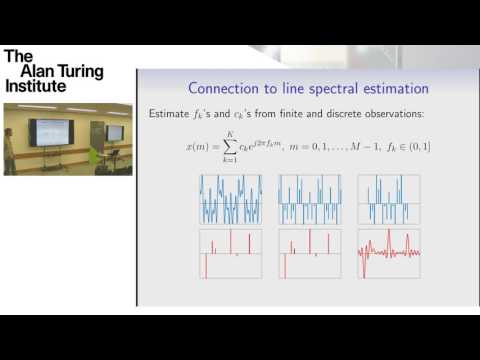Description:
Explore modal analysis techniques for structural health monitoring in this 52-minute lecture from the Alan Turing Institute. Delve into sampling and compression strategies for wireless sensor networks, focusing on SVD-based methods and atomic norm minimization for mode shape and frequency recovery. Examine theoretical bounds on sample complexity and recovery accuracy, and compare various sampling/compression approaches. Learn about applications in civil and structural engineering, signal processing, and applied mathematics. Gain insights from speaker Michael B. Wakin, an accomplished researcher in compressive sensing and signal processing, as he presents case studies, experimental results, and discusses open questions in the field.

Modal Analysis from Random and Compressed Samples
Add to list
#Engineering
#Electrical Engineering
#Signal Processing
#Civil Engineering
#Structural Engineering
#Mathematics
#Applied Mathematics
#Computer Science
#Internet of Things
#Sensor Networks